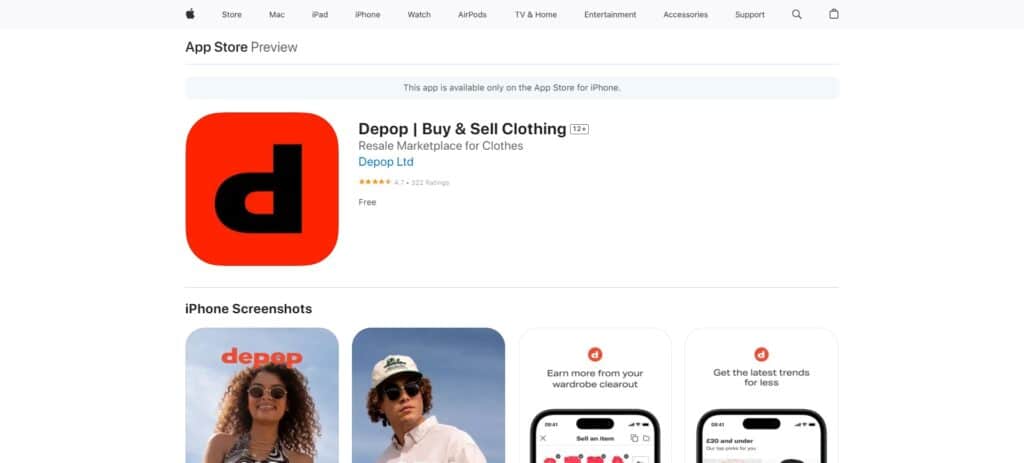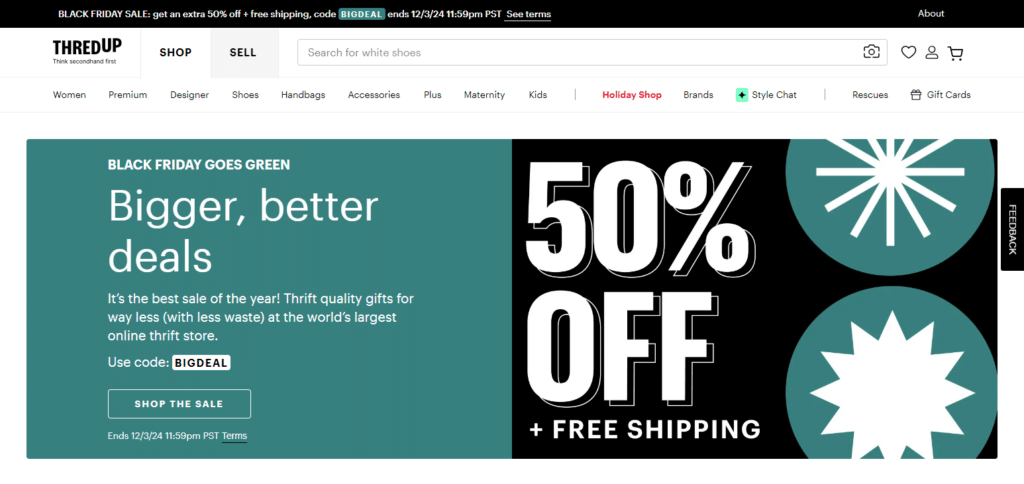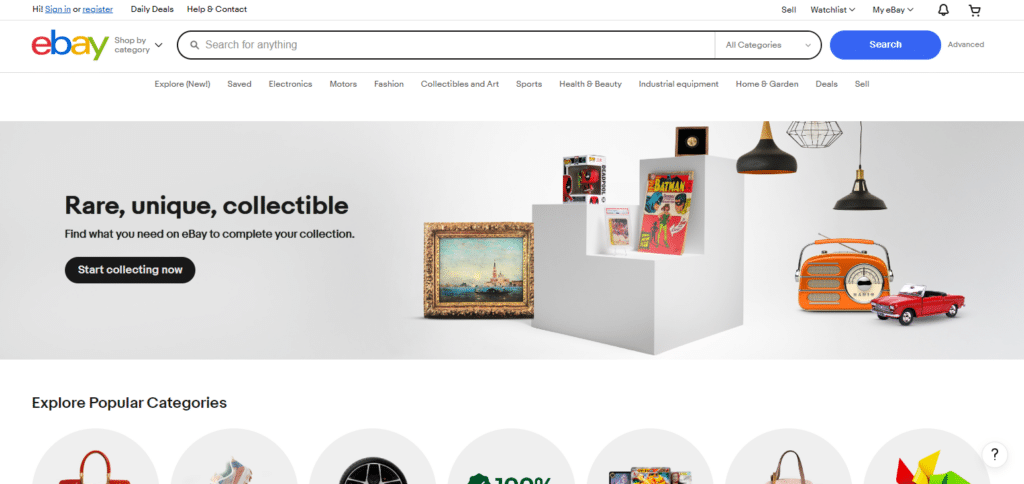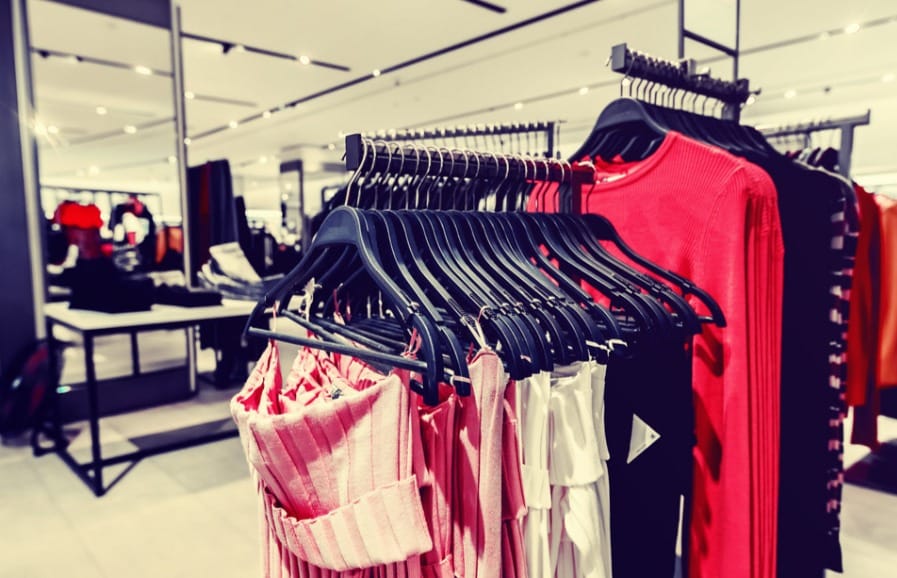In this article, I will discuss the best apps For selling clothes. Nowadays, there are so many websites and apps that one has to be selective when it comes to choosing the right platform for selling clothes.
If one has an interest in greater management and control or is searching and does not want to pay fees to the sellers, every app has such features. Let’s find out what app is most beneficial for you.
Key Point & Best Apps To Sell Clothes
| Platform | Key Point |
|---|---|
| Poshmark | Focuses on fashion and provides a social shopping experience with sharing and parties. |
| Mercari | Allows users to sell a variety of items, including fashion, electronics, and home goods. |
| eBay | Well-known for auctions and a broad range of product categories, offering both new and used items. |
| Depop | Popular among younger users for its trendy, vintage, and handmade clothing items. |
| ThredUp | Specializes in secondhand clothing, offering a clean, curated shopping experience. |
| Vinted | Focuses on affordable secondhand clothing, with no selling fees for users. |
| Facebook Marketplace | Convenient for local buying and selling, with the advantage of connecting within communities. |
| Shopify | Allows individuals and businesses to create their own online stores and sell a wide range of products. |
10 Best Apps To Sell Clothes
1. Mercari
It is the case that Mercari is an app for selling popular clothes with a wide audience, making it ideal for anyone who wants to sell their wardrobe and make some extra money.
The software has user-friendly features where traders can snap pictures of things and upload them together with a description of them and the price they want to sell at.

The good news is that Mercari and labels offer shipping options, thereby simplifying the selling process.
This platform proves cost-effective for casual sellers due to its low fees, which usually amount to about 10%. Moreover, transactions on Mercari are secure through buyer protection.
With its huge customer base and simple interface, this app works best for people looking for easy ways to do away with clothes.
2. Depop
Depop is gaining a lot of popularity amongst the younger generation who are searching for unique, vintage, or just stylish clothes.
It somewhat feels like social media but is also an e-commerce platform meaning sellers who want to sell their style and find people with similar styles fit in perfectly.

It’s very easy to use the app as sellers quickly upload pictures, price them, and chat with potential buyers.
Depop takes a more community-centered approach, integrating its users within its platform, making the selling and purchasing experience interactive and enjoyable.
3. Vinted
Vinted is great for those wishing to sell their clothes without paying any selling fees and having hassle-free transfers.
Out of a number of selling apps, Vinted today’s unique selling point is that it does not charge the sellers anything, which means that they receive all of their profits.

This app is not difficult to operate; the features are complete in a smooth manner, and sellers can list their products quickly via pictures, prices, and item descriptions.
Separate buyer and seller communication is also possible with Vinted, which helps establish transparency.
It’s a great place to find cheap secondhand clothes and for those looking for budget-friendly fashion.
4. Facebook Marketplace
Facebook Marketplace allows clothing items to be sold locally without the hassle of shipping and enables the buyer and seller to meet in person.
It allows the users to sell within their community, making it easy for sellers who don’t want to deal with the shipping of the items.

Users of Facebook Marketplace have a simple task in terms of listing clothes because they only have to take photos, give descriptions, and state the prices of the clothes.
The site has messengers too, which help in communication with the buyers and easy arrangements of picking up the items, making the sales more personal as well.
5. Shopify
Shopify is a great option for sellers who wish to run their own online branded stores where they can list clothes for sale.
Although there is a subscription fee, the benefits that come with it in terms of the design aspects of the store, managing what products are listed, and the fact that payments can be made in different manners are worth it.

For those seeking to expand their online clothing store, Shopify is ideal as it helps ensure that a professional customized platform is provided for consumers.
It optimizes various portals for payment hence easing the transactions. With built-in marketing tools and inventory management, Shopify is viable for serious sellers who are looking to grow and reach potential customers in diverse areas.
6. ThredUp
ThredUp can be a good option for people who are looking to get rid of their secondhand clothes with little effort.
All sellers have to do is send their items over to ThredUp, and the company shall assess, price, and sell them on their site.

This eliminates the need for sellers to put in time and work with regard to the listing of clothes.
This thrift app has quality secondhand clothing in different brands and designs. It also promotes the sustainable fashion industry by reusing clothes and attracting eco-friendly customers.
7. eBay
eBay is still one of the leading platforms for selling clothes, thanks to its global audience, which includes several listing styles: fixed price, auction, etc.
Sellers can present their clothes to buyers from various countries and other demographics.

It allows clothes and high fashion items to be sold through the platform.
Furthermore, the tools provided to sellers on eBay are also very useful. They include detailed item descriptions and/or pictures for the seller to outline clearly the clothing item they wish to sell. Such policies enhance buyer trust and the security of transactions.
8. Poshmark
Poshmark is an extremely popular clothes-selling App known for its sociable and interactive features. Users can easily create listings, share their postings, and interact with others via likes and comments.

Poshmark hosts virtual “Posh Parties” where users can showcase their items to a broader audience, increasing visibility and sales potential.
It facilitates secure transactions while giving prepaid shipping labels so that the selling process becomes straightforward through its application system.
Poshmark has only one flat commission charged on sales, which is clearly stated without any hassle. Its lively community and intuitive interface rank it first among fashion sellers who want to interact with each other.
How to Choose the Best App to Sell Clothes
The best app to sell clothes will obviously depend on your requirements as a seller. Mentioned below are some of the key considerations:
Audience Type
Identify the type of consumers you want to market your products to. For instance, younger shoppers can find trendy and cheap clothes on Depop and Vinted. Meanwhile, Poshmark and ThredUp suit those who love unique second-hand and branded clothes.
Commission Structure
Review the listed fees for selling, listing, and any transaction that is done within the platform. For instance, there are no selling fees when using Vinted, whereas Poshmark and eBay have some fees and charges.
Usability
Select an app that will seem easier for you. Apps like Mercari and Depop are straightforward because they don’t have complex procedures.
Payment Methods:
Check that the app allows for quick and safe payments. eBay and Shopify have good payment processing mechanisms, while Facebook Marketplace eliminates the need to wait for payment by allowing transactions to be made directly on the platform.
Shipping Logistics
Evaluate how the site implements shipping. For example, ThredUp handles all logistics, while Mercari and Poshmark offer simplified shipping services and prepaid labels.
Community & Engagement
For those who see worth in interaction with current and potential buyers, Poshmark encourages participation through features like “Posh Parties,” which helps sell items and improve visibility. Depop calls this community-focused strategy its USP all the time.
Customization Options
For those who wish to have more prominence on the brand, Shopify enables its users to establish branded stores that provide limitless opportunities to control their advertisements, which is highly useful for expanding the clothing business.
Considering the above-mentioned factors: the audience you are aiming at, the commissions, the platform’s ease of use, the payment procedures, the shipping arrangements, and the customization of the app, one can make a competent choice of an app for clothing sales targets.
Conclusion
To sum up, choosing the best app for selling clothes online depends on what a seller wants.
If you are very community-oriented and love fashion, you can choose Poshmark and Depop.
If you want a passive approach to the site, ThredUp takes care of both listings and shipping for users.
For selling without any charges, Vinted is the best place to be. eBay sites are very popular, whereas Facebook Marketplace is great for sales within a community.
For those who want to control their brand and business growth totally, Shopify is a great tool. In this manner, by taking into account such aspects as target audience, support, pay, and user interface, every user will be able to find a platform that will fully match his selling objectives.













Leave a Reply
View Comments